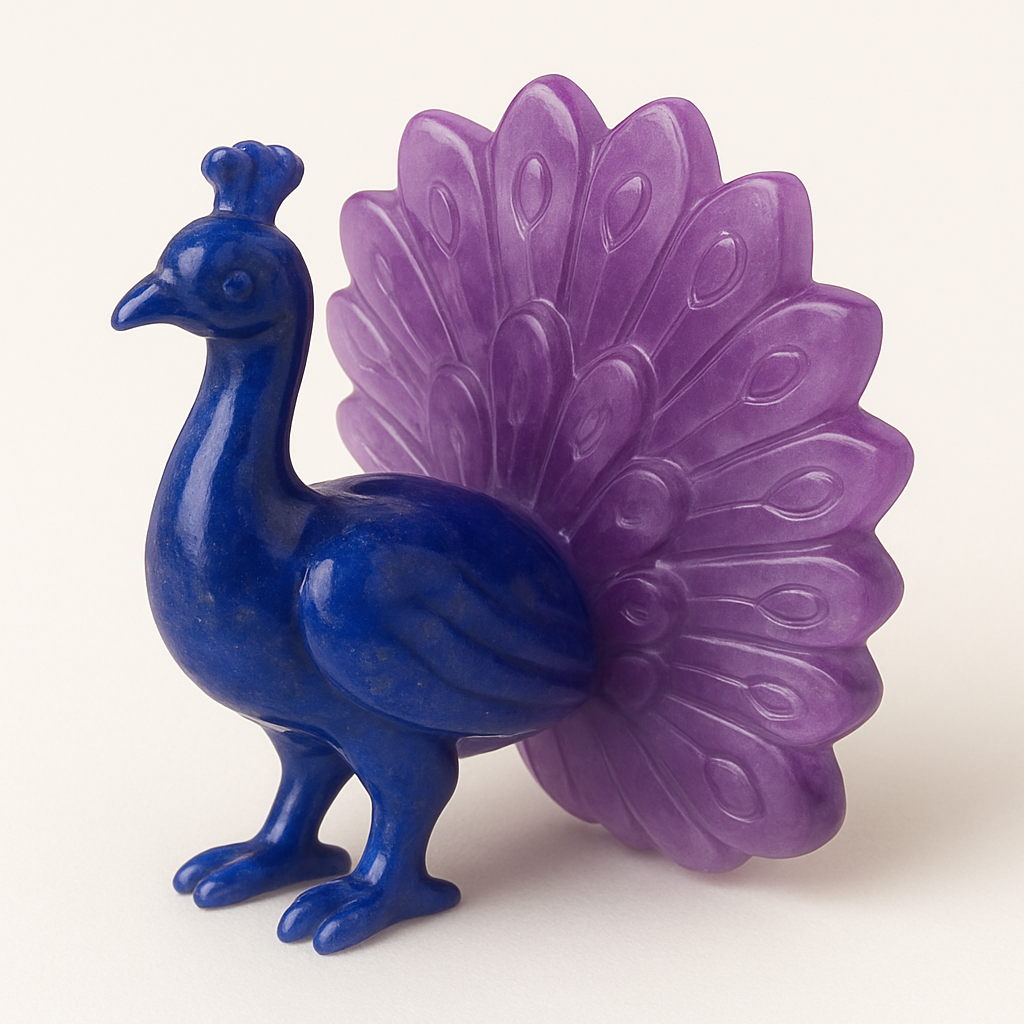
The Symbolism of Peacocks
Share
Draped in iridescence and radiant in stillness, the peacock does not hide its beauty—it becomes it. With feathers like fractals and a gaze like a mirror, it walks not with haste, but with full awareness of its own presence. The peacock is an emblem of divine majesty, truth revealed through radiance, and the inner light made visible through fearless expression. It teaches that beauty is not decoration—it is the signature of inner harmony brought outward.
To contemplate the peacock is to encounter the archetype of self-realization displayed, of spiritual dignity in form, and of the one who reveals truth not through words, but through appearance aligned with essence.
The Radiant Messenger in Cultural Memory
In Hindu tradition, the peacock is sacred to Saraswati, goddess of wisdom and eloquence, and to Kartikeya, the divine warrior who rides the peacock as a mount. It represents purity, strength, and knowledge without pride, with its feathered eye symbolizing watchfulness, awakened consciousness, and protection.
In Buddhism, the peacock is a symbol of transmutation—one who eats poisonous plants and transforms them into dazzling feathers. It represents the alchemical principle that poison, when met with wisdom, becomes light. Thus, the peacock is not only beautiful—it is wise through digestion of distortion.
In early Christian mysticism, the peacock symbolized eternal life, as its flesh was believed not to decay. Its form became a sign of resurrection, incorruptibility, and the immortal soul. In all traditions, it is not a vain creature—it is a symbol of soul beauty shining through the veil of form.
Display, Dignity, and Beauty Without Apology
When the peacock opens its feathers, it does not beg to be seen—it demonstrates its nature. There is no strain in its display, no self-consciousness. It stands in full radiance, offering its colors not to boast, but to reveal that harmony within naturally expresses itself without.
Its feathers shimmer with shifting hues—reminders that truth is not one color, but many, refracted through the soul’s own clarity. The “eyes” upon its train serve not only as beauty, but as watchers of the unseen, energetic mirrors that reflect both presence and distortion.
It teaches the seeker that to be seen is not a crime, and that when the inner world is pure, external brilliance becomes service, not ego.
Resonance with the Energy Centers
The peacock resonates primarily with the blue-ray energy center—the throat chakra, which governs expression, radiance through alignment, and truth as vibrational offering.
Its beauty is not ornamental—it is communicative. The peacock expresses its being through form, movement, and color, demonstrating that communication is not only spoken—it is revealed through how one carries the self. The blue-ray here is not confined to words, but is fully embodied expression, truth as aesthetic coherence.
There is also a secondary resonance with the indigo-ray energy center—the third eye chakra, which governs awareness of unity, sacred perception, and spiritual vision without distortion.
The “eyes” on the feathers are not merely design—they are symbolic of multi-layered perception, the ability to see from within, and to project energy that perceives while being perceived. The peacock teaches the seeker to see clearly, and to allow oneself to be seen as a mirror of deeper truth.
Together, blue and indigo shine through the peacock as:
beauty aligned with soul,
vision expressed as form,
and truth that requires no apology to shine.
The One Who Radiates Without Fear
To walk with the peacock is to learn that true expression comes not from trying to impress, but from allowing the self to reflect the light within. The peacock invites the seeker to release shame, to express one’s soul in form, and to stand calmly in the fullness of one’s vibrational color.
The peacock does not hide.
It opens.
It does not shrink.
It expands.
It teaches:
Let beauty be truth.
Let vision be seen.
And let the soul wear its colors without fear.